EXPANDING FIRE FOAM TO FILL VOIDS
In this Bitesize CPD we will be looking at the use of expanding fire foam used to fill holes in walls or ceilings.
Invariably incorrectly installed it is one of the more common defects picked up by FCM’s Clerks of Works during their site inspections.
Pink fire Foam, how many times have you seen something like this on site?
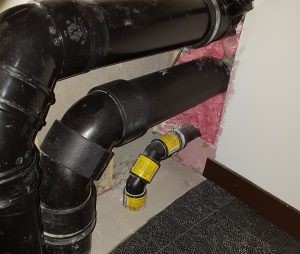
Increasingly expanding (pink) fire foam is being used to fill holes and penetrations. Do you know whether it is really a fire barrier?
In the photograph above it is being used to fill a penetration through a fire wall. There are no fire collars on the plastic pipes and the foam will not provide the required 1 hour of fire protection.
We have gone to the Soudal website to find how they say it must be installed and you may well be surprised by the complexity required.
They say:
The openings around metal pipes and cables, but even blank seals can allow a fire to penetrate. For this reason, these openings must be sealed against fire. For cable trays and pipes, Soudal offers fire-resistant solutions tested in accordance with European standards (EN 1366-3).
These installation instructions are drawn up to guide the installer through the correct process of sealing openings against fire. The correct execution of these instructions ensures that the products are installed in accordance with the test certificates. Only then is it possible to guarantee the fire-resistant capacity of the products in accordance with EN 1366-3. Always ask for the test certificates before starting any work.
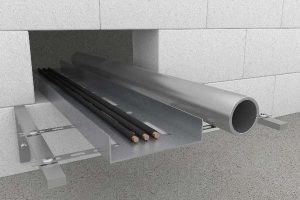
- Note: The opening should not be more than 700cm2. (That is smaller than the opening shown).
- For Concrete, aerated concrete, brickwork
- Wall must be at least 150mm wall thick
- Ensure the openings are free from dust and grease to achieve an optimum adherence between the products and substrate.
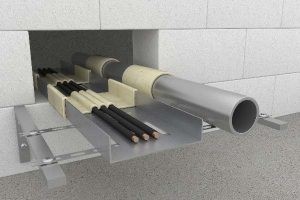
- Apply a layer of Fire Blanket covering the cables for a length of 23cm from the wall, on both sides of the wall.
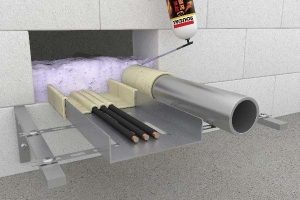
- Fill the opening.
- The foam will increase up to 3 times in volume.
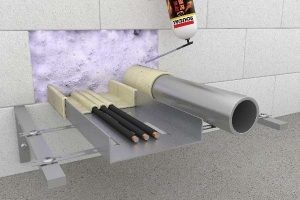
- After filling the opening, wait approx. 30 minutes for the foam to fully harden.
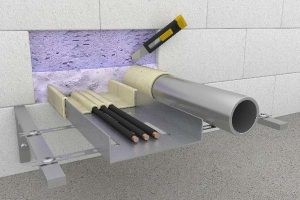
- Cut any excess foam away. Cut the foam away up to a depth of 4mm across the whole surface along both sides of the opening. Use a sturdy knife.
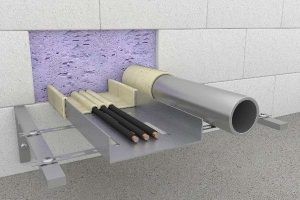
- Remove all foam residue.
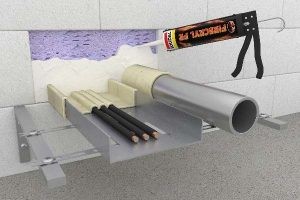
- Apply a layer of Fire Mastic (Fireecryl FR) of 4mm on both sides of the opening.
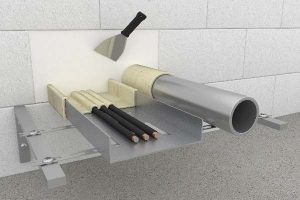
- When the entire surface of the opening is covered with a layer of Fire mastic, a damp spatula can be used to smoothen the surface. Do this on both sides of the opening.
- Once the Fire mastic has hardened, fire-resistance is guaranteed. The area can now be painted.
How many times have you seen this procedure on site? Very often we are left with something like the picture at the top with a coat of emulsion over to blend in with the surrounding substrate.
Download the Soudal installation brochure and know your fire stopping – someones life may depend on it.
www.soudal.com.au/pdf/FireRatedCatalogue.pdf
Steve Farrell
T: 07714234380
E: stevefarrell@fcmltd.co.uk
L: linkedin.com/in/stevefarrellfcm- Subscribe to Our Newsletter


